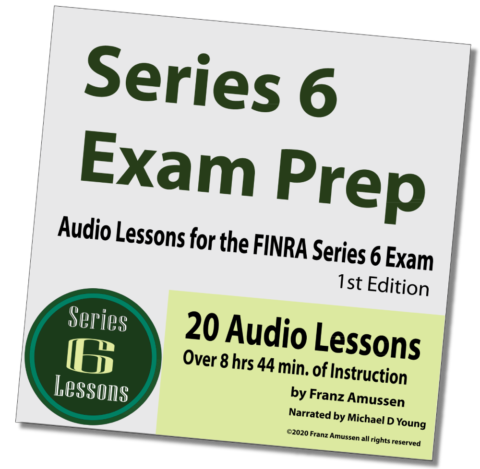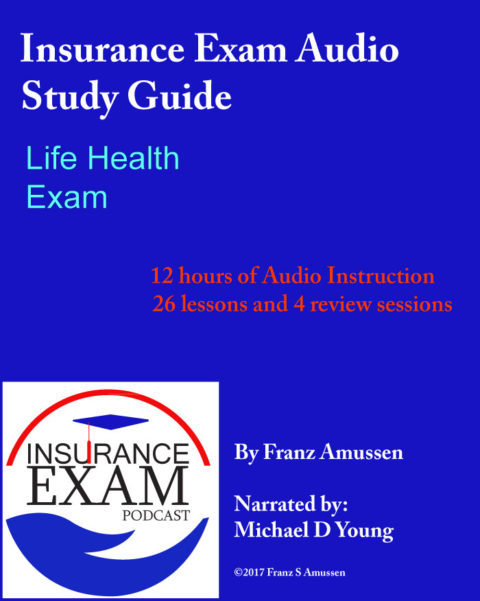Lesson 8 Securities Act of 1933:
After the stock market crashed in 1929, Congress passed The Securities Act of 1933, which brought major reform and regulation to the financial industry in the United States. It regulates the primary market, and requires people to disclose all material facts when transacting business with each other. The primary market is the market of transactions between securities and investors. The person who issues the securities gets the proceeds that come from the sale of that security.
The Act requires nonexempt issuers (usually corporations) have to register with the Securities and Exchange Commission (SEC). This is a document that discloses all the pertinent information to the government so that this issuer can be regulated. It has to disclose their operations and their financial condition. It should include a balance sheet, a profit and loss statement for the last three years, the company’s capitalization, the uses of the company’s proceeds, a list of shareholders that hold 10% or more of the company’s securities, and biographical information about the officers and directors of the company.
Once the SEC gets this document, they will review it over the course of 20 days or more, which is known as the cooling-off period. If there is something that is missing, the SEC can issue a deficiency letter, which will request what still needs to be submitted.
The company cannot advertise their offerings until the SEC signs off on their registration.
The registered representatives can only take indications of interest from investors during the cooling-off period. They can give them a preliminary prospectus, sometimes known as a “red-herring”, because it has to has a big red notice on the cover that says, “These securities have not yet become registered with the SEC and therefore may not be sold.” It contains most of the information from the final prospectus, but it cannot include the offering price, the effective date, and the proceeds to the issuer. Everything in it is subject to change.
The final prospectus can be handed out after the cooling-off period. All purchasers, must be given a final prospectus before they are allowed to finish the sale. This document must offer full disclosure of all pertinent facts. The SEC will take a copy of the final prospectus and post it on their website so that it is freely available.
The final prospectus has to include the following information: a description of the securities, the price of the securities, how the proceeds are going to be used, what the underwriter’s discount is, the date of the offering, the type and description of the underwriting, the business history of the issuer, biographical information over the company directors and officers, information over large stockholders, the company’s financial data, any risks that the purchaser assumes, legal matters that pertain to the company, and the SEC disclaimer. “These securities have not been approved or disapproved by the SEC nor have any representations been made about the accuracy or the adequacy of the information.”
A free writing prospectus is any written communication that is broadcast or published by the issuer that provides information about the securities they are offering. These can include commercials, emails, and press releases. These kinds of prospectuses, should include a statement encouraging the prospective buyer to read the actual full prospectus. A link to the full prospectus is often included. These kinds of prospectuses must also be filed with the SEC.
Investors who purchase securities in the secondary market also have to given a final prospectus.
If an issuer misrepresents something and their purchaser loses money, the Act of 1933 allows the issuer to sue for financial damages. They can seek money from the issuer, the underwriters, the officers and directors, any party who signs the registration statement, or even accountants and attorneys who helped prepare the registration statement. These errors are supposed to be rooted out during the cooling off period through a due diligence meeting.
Tombstone ads are the only kind of ads that are allowed during the cooling-off period. It is only an announcement and description of the securities that are going to be offered. It lists the names of the underwriters, where you can get a prospectus, and a disclaimer that the ad does not constitute an offer to sell securities and that this offer can only be made by a prospectus. They can include the amount of the security to be offered, the date of sale, a general description of the business, and the price of the security. They do not need to be filed with the SEC, but are just used to make announcements about new issues.
A broker-dealer who is underwriting a new issue for the public cannot withhold any securities for the underwriters, another broker-dealer, a firm employee, a person financially supported by a firm employee, or an employee of another FINRA member. This is according to FINRA Rule 5130. It also requires that a broker-dealer get an eligibility statement from anyone who purchases a new issue of stock within 12 months before the purchase. Some people are considered conditionally approved, such as nonsupported family members, officers and employees of financial institutions, and accountants/attorneys who are associated with the underwritin Corporate Securities
A business often determines that it needs capital and then has to decide how it is going to do this. Many times, they will hire an investment banker, also known as an underwriter, in order to meet their goals. The underwriter advises the issuer about which kind of securities they should offer, such as stocks or bonds, and what the terms of these securities should be. The underwriter is acting as a fiduciary and trying to get the best terms possible for the issuer.
The duties of the underwriter include advertising the new issue to potential investors, advising the issuer about the terms of the offering, purchasing securities from the issuer to resell them.
The issuer is responsible for filing the registration statement with the SEC, taking care of registering the securities in the states in which they will be sold (blue-skying), determining the underwriter’s compensation.
There are different kinds of agreements between the underwriter and the issuer, including firm commitment, best efforts, mini-maxi, all or none and standby.
Firm commitment = the underwriter agrees to buy all the securities the issuer is offering no matter what, whether or not he can sell them to investors. This is the goal of issuers, because this will give the issuer all of the money right away. The more desirable the offering is, the more likely the issuer is to get this kind of agreement. This is a riskier arrangement for the underwriter, because he will not recoup his money if the issue does not sell. They often have what is called a “market-out clause”, which gives them the option to bail on their offer if there is a development that affects the quality of the shares.
Best Efforts = The underwriter promises to give his or her best efforts to sell all of the securities, but they are not under an obligation to do so. This usually happens for securities with smaller demand. Any unsold securities will be returned to the issuer.
Mini-Maxi = This is like a best efforts agreement that does not kick in until a minimum number of securities have been sold. Once the minimum has been met, they can sell up to the maximum number of securities available. The funds collected from investors are held in escrow until the underwriting is complete. If the minimum is not reached, the offering will be canceled and the funds returned.
All or None (AON) = This is an all or nothing agreement. Either everything is sold, or the offering is canceled and the investor’s funds returned.
Standby = This is where a standby underwriter agrees to purchase shares that current shareholders do not purchase. This underwriter will then release the share to the public.
If you are ready to get serious and want the full series of Series 22 Audio Lessons…
In order to take the Series 22 Exam you must also Pass the SIE Exam
We also have audio lessons for the following exams:
Podcast: Play in new window | Download








